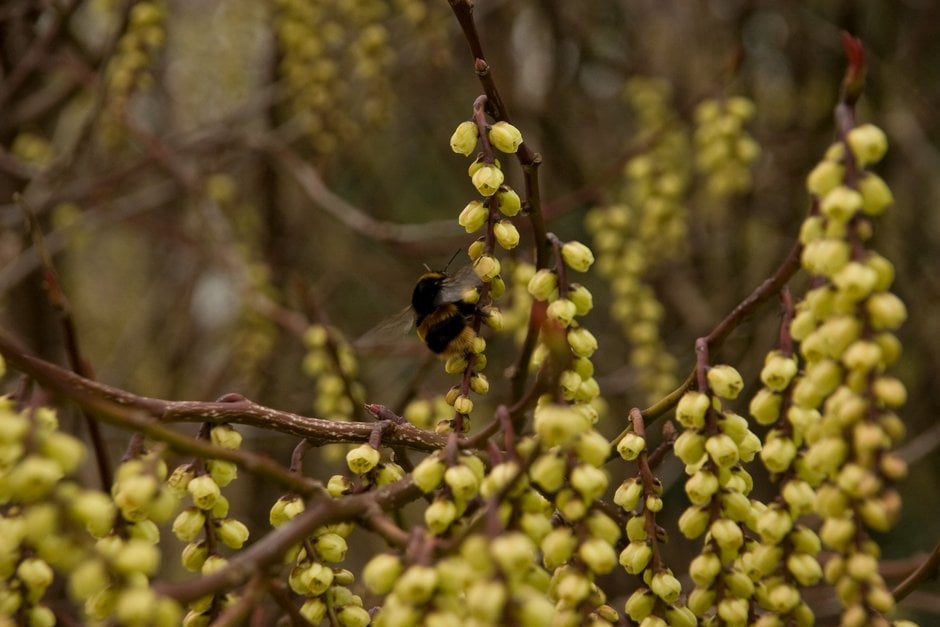Stachyurus praecox

early stachyurus
A spreading, large, deciduous shrub to 4m in height, with red-purple shoots and slender-pointed, mid-green leaves 8-15cm in length, and drooping racemes to 8cm in length of bell-shaped, pale yellow-green flowers 8mm in width, in late winter and early spring on bare branches
Size
Ultimate height
2.5–4 metresTime to ultimate height
20–50 yearsUltimate spread
1.5–2.5 metresGrowing conditions
Moisture
Moist but well–drainedpH
Acid, NeutralColour & scent
| Stem | Flower | Foliage | Fruit | |
| Spring | Green | |||
|---|---|---|---|---|
| Summer | Green | |||
| Autumn | Green | |||
| Winter | Yellow |
Position
- Full sun
- Partial shade
Aspect
South–facing or West–facing or East–facing
Exposure
Exposed or Sheltered Hardiness
H5Botanical details
- Family
- Stachyuraceae
- Native to GB / Ireland
- No
- Foliage
- Deciduous
- Habit
- Bushy
- Genus
Stachyurus are small deciduous trees with simple, ovate leaves and stiffly pendent racemes of small bell-shaped pale yellow flowers in late winter and early spring
- Name status
Correct
- Plant range
- Japan, Korea
How to grow
Cultivation
Grow in light moist but well-drained, humus-rich, neutral to acidic soils. Suitable for shrub border or for growing in woodland garden or against a wall
Propagation
Propagate by seed or heeled semi-hardwood cuttings
Suggested planting locations and garden types
- Cottage and informal garden
- City and courtyard gardens
- Wildlife gardens
- Wall side borders
- Flower borders and beds
Pruning
Pests
Generally pest-free
Diseases
May be susceptible to honey fungus in gardens where it is present but insufficient data to determine degree of susceptibility
Love gardening
Sign up to receive regular gardening tips, inspiration, offers and more
View our Privacy Policy
Get involved
The Royal Horticultural Society is the UK’s leading gardening charity. We aim to enrich everyone’s life through plants, and make the UK a greener and more beautiful place.

